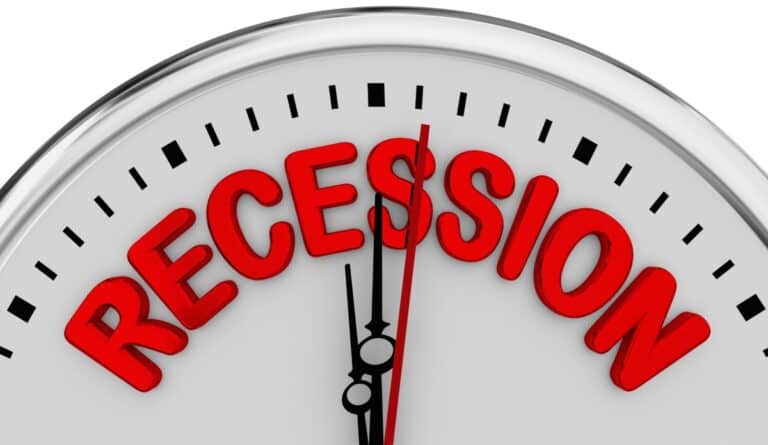How To Start Investing in Stocks: 7 Step Guide For Beginners
You must go way back in history before finding people who were not asking how to get started in stocks. The Dutch East India Company likely sold the first stock about 1602.
Since the stock market first opened in the United States in 1790, people have been making money investing in the stock market, but it remains a mystery to many people. Yet, many people can benefit from diversifying their investment portfolio by adding some stocks to it. As a new investor, you may wonder how to start investing in stocks.
Legendary investor Warren Buffet’s quotes on investing encapsulate his 90 years of wisdom. He defined investing as “the process of laying out money now in the expectation of receiving more money in the future.”
To understand how to start investing in the stock market as a beginner, you need to have a plan in place. The great news is that you can start investing with very little money. Let us dive in and define our investment strategy following our risk tolerance.
How Do You Start Investing in Stocks
Following a multi-step approach will equip you with the knowledge to answer how you begin investing in stocks.
Step 1: Define Your Goals
The stock market is a great place to grow your money, but it’s not a good place for everyone. Before you learn how to start investing in stocks, take a step back and ask yourself, “why”?
The purpose of defining your financial goals is twofold
1) Having a clear picture of why you are investing will make it easier to continue investing when the going gets tough
2) The goal will define your timeline and level of risk in your stock investing plan.
Our analysis of the best assets to buy shows that stocks score high on returns, risk, and volatility.
In the short term, stocks are volatile and hence not recommended if your goal is short-term.
For example, if you are saving up to buy a car in 6 months, the money may be better off in a savings account with your emergency funds until you have enough for your purchase.
If you are saving for a down payment to buy a house in a year, you can better invest that down payment in fixed income securities such as secure government I-Bonds.
On the other hand, if you are planning for retirement, then learning how to invest in stocks makes sense, and you have an approximate timeline for investment based on your expected retirement date. Similarly, if you want to fund your kids’ education by investing in the stock market, you know you need the money in the next fifteen years.
Break down your financial goals into short-term, medium-term (three to six years), and long-term (more than six years).
Step 2: Determine How Much You Can Invest
After defining your goals, you should identify how much you can invest and how frequently. Yes, you can invest a large lump sum in the stock market, but it is always better to invest regularly and use dollar-cost averaging to reduce the volatility.
Once you have your personal finance basics in place, determine your monthly cash flow and how much you can set aside every week or month to invest in stocks.
I use a free tool like Personal Capital to give me an automated picture of all my income and expenses to know how much I have remaining at the end of every month to invest. It also tracks my liquid net worth automatically. You can read my Personal Capital review to learn how I use the free tool.
Step 3: Define How You Want To Invest
To learn how to invest in stocks, you need to research what to invest in. There are several methods to invest in the stock market.
Individual Stocks
When you own a stock, you own a piece of that company. You could pick individual stocks, but it is more than a full-time job to look at balance sheets and understand competitors, products, risks, and opportunities. You also need to understand the broader economy and how macro factors might impact your stock picks.
Mutual funds
Instead of buying individual stocks, you can buy a basket of stocks together via a mutual fund. The companies in stock mutual funds are grouped based on a theme. For example, you can have a dividend income or growth mutual fund. The stock mutual funds could also be based on specific sectors of the economy, such as technology funds or biotech funds. Or it might be based on economic factors such as developed market funds or emerging markets funds to provide exposure to international stocks. Mutual funds can be active with a fund manager picking individual stocks or tracking an index passively.
Index funds
Index Funds are mutual funds designed to follow a particular index such as the S&P 500 or the Nasdaq or the entire U.S. stock market or the Russell small-cap index. Since the index funds are meant to track an index, they are often passive and have low expense ratios (fees). Low-cost index funds might not be a bad start if you begin investing in the stock markets.
Exchange-traded funds (ETFs)
ETFs are mutual funds that trade intra-day. The main difference between a mutual fund and an ETF is that it is based on that day’s closing price when you buy or sell a mutual fund. But with ETFs, your price depends on your order’s execution time. For example: if you bought the S&P 500 mutual fund today, you would get it at whatever was the final price when the stock market closed, no matter if it was higher or lower during the day. In contrast, when you buy an ETF at 11 am, you get the trading price of the ETF at 11 am. When you start investing in the stock market, one need not bother trying to time the market, but these concepts are helpful to be aware of.
Step 4: Define Your Investment Style
Before deciding how to start investing in stocks with little money, understand your investment style and the type of investor you are. There are several factors that you need to consider.
Passive vs. Active
Many investors take a more passive approach when they learn how to invest in stocks. These investors generally rely on index funds and follow a more do-it-yourself approach. They trust that stock indexes held over time will help them obtain a higher return on their investment. Common stock indexes are the Dow Jones index, the S&P 500 index, or the Nasdaq.
Active investors believe that stock market experts can pick better than average stocks, so it is worth the investment to pay these people for their expertise. You may need to pay a flat fee for their knowledge, or you may pay a higher commission when you buy or sell stocks.
Growth or Value Investing
Another essential item to decide when you are starting to learn how to invest in stocks is to focus your attention on growth or value investing.
Investors who focus on growth look for companies who have:
- High earnings
- Large growth rates
- High return on equity
- Large profit margins
- Low dividend yields
These companies usually are making lots of money, but they are investing it back into innovations, which will shape the future of their industry. If you look at my moonshot portfolio, it is heavily titled towards growth companies.
Alternatively, when looking at investing in stocks for beginners, you may want to consider value investing. Those investors choosing this style are most interested in getting a reasonable price on the share when making the initial purchase. Stocks offering that quality often have low price-to-earnings ratios and low price-to-sales ratios. Generally, these shares have a larger dividend yield.
Small vs. Large Caps
A third decision you need to make to learn how to begin trading stocks is to buy small or large caps. While small caps come with a more significant risk, consider them more agile because they are generally smaller. Therefore, they can change quickly to meet the needs of their consumers.
On the other hand, some beginners learning how to start trading stocks like to focus on familiar names companies. Large-cap stocks usually come from companies that are unlikely to go under, but they usually cannot move as fast when their market decides to go in a different direction.
When you learn how to invest in the stock market for beginners, evaluating where you stand in each area will help you learn how to start trading stocks. Your risk tolerance should guide you. For example, investors with low-risk tolerance might prefer large-cap stocks. They might also pick a buy-and-hold strategy using passive index funds. Conversely, investment accounts with high-risk tolerance might have more small-cap and value stock mutual funds.
Step 5: Choosing the Right Type of Broker
The next step for beginners to learn how to invest in the stock market is to decide the correct broker for you. While different companies offer many services, we also realize that one or more types of brokerages might be a good fit, depending on your goals. Therefore, please look at various services and compare them to your comfort levels.
Full-service brokerage
Investors ready to learn how to start buying stocks will be most comfortable with a full-service brokerage. The investment account has human advisors who offer guidance on every aspect of your life where money is involved. The legacy brokerage firms provide a full range of traditional brokerage services, including wealth management, retirement planning, generational wealth planning, creating trusts, and money-related matters.
The brokerage account will have stocks funds and money market funds selected by your financial advisor to build a diversified portfolio based on your risk tolerance.
Unfortunately, they often only work with individuals with a significant net worth. They generally deal with high net worth individuals (HNI) and charge substantial fees, such as annual fees, transaction fees, and fees for assets under management (AUM). The full-service brokers offer personalized investment advice tailored to your specific requirements to justify their exorbitant fees.
Robo advisor
Robo advisors use technology to lower costs for investors and streamline investment advice. They present investors with a series of questions to understand their investment goals, timelines, and risk tolerances. The technology platform guides beginners to start investing in stocks without knowing anything beyond the basics.
When you start investigating how to invest for beginners, you may want to consider Robo-advising. This is often a good choice for those who want to buy stocks and forget about it because the longer you hold a stock, the more likely you are to make money. Understand that with this service, you get very little investment advice.
The robo advisory firms act based on an algorithm. They often include features like tax-loss harvesting, automated rebalancing, and changes to your asset allocation over time-based on your age and goals. Betterment, Charles Schwab, and a host of other firms offer Robo advisor features.
Do-It-Yourself (DIY)
You pick individual stocks based on your set parameters with a do-it-yourself service. You also decide when to buy and sell stocks. Many DIY investors open an online brokerage account at a discount broker. They might occasionally consult with financial advisors on a need basis.
Discount Brokers
Discount brokers, also known as online brokers, used to be an exception, but more and more individuals who want to start investing are attracted to them. Discount online brokers provide tools for selecting and executing your transactions (DIY), as well as a set-it-and-forget-it Robo-advisory service. Over time, online brokerage accounts have added new features, including educational materials and mobile apps.
In addition, while there are a lot of discount brokers that do not (or barely) have minimum deposit restrictions, you may be subject to other limitations. Fees may be levied on accounts that do not have a minimum deposit. If you want to invest in equities, an investor should consider this.
Step 6: Open a Brokerage Account
The next step is to open a trading account. Usually, you can open these brokerage accounts for free at various financial institutions. Here is the list of some of my favorite advisory or brokerage services, along with their unique features.
| Brokerage | Features |
|---|---|
| M1Finance | Auto rebalance, Zero fees, Auto Invest, $100 Minimum |
| SoFi: iOS, Android, Desktop | Crypto and Stock in single app |
| Webull | Crypto and Stock in single app Limited Time Offer–5 Free Stocks Give-away: 5 x Free Stocks Give-away valued between $27-$9600 *When open account, get 2 x free stock worthy $3–$300 * When make an initial deposit at Any Amount (even just a $0.01), get another 3 stocks worthy $7–$3000 |
| Vanguard | Auto invest, $3,000 Minimum |
Step 7: Building Your Stock Portfolio
Congratulations, you have now opened an account, but you still have a ways to go. The next step is to determine what your portfolio should look like, and this is a crucial step in learning how to buy stocks for beginners. Diversifying your portfolio based on your investment objectives is key to making money when learning to buy stocks.
Aggressive Portfolio
A person learning how to start stocks should be careful to implement an aggressive portfolio investing strategy. These stocks can swing wildly up and down, so you can make and lose money very rapidly. Typically stocks in this category are offered by companies just starting and have a unique customer value proposition. Aggressive portfolios are made up of growth companies and do not have many bond funds.
Defensive Portfolio
A person learning how to invest for beginners often does well with a defensive portfolio, although other people may be making more money with their investments. Companies in a defensive portfolio produce consumer goods that almost every household must-have regardless of whether times are good or bad. Defensive portfolios are excellent for investors with low-risk tolerance.
Income Portfolio
You may want to consider building an income portfolio when you start investing in stocks. Investors choose stocks to include in this type of portfolio because they have traditionally paid a high yield. Since many of these companies regularly provide a dividend, you can make long-term money by holding on to these stocks.
These stocks may also be incorporated into a defensive portfolio, so there is a lot of overlap between Income and Defensive portfolios.
Speculative Portfolio
Like gambling at your favorite casino, buying stocks to include in a speculative portfolio is often a matter of luck, especially for the individual who is still learning how to start investing in stocks. Stocks often incorporated into this portfolio include those just getting started or those a larger entity may soon take over. Additionally, companies investing all their assets into one breakthrough product would fall into this category. Many small-cap biotech stocks waiting on FDA approval for a new medicine would be part of a Speculative Portfolio.
Final Thoughts On How To Start Investing In Stocks
Stocks are a great wealth-building tool in the long term. However, they are volatile, although not as volatile as investing in crypto.
You should know your risk and volatility tolerance when you begin investing in the stock market. Volatility is expected in the stock market, even for long-term investors, when the markets are uncertain. During such a period, even the individual relatively safe stock fluctuates in price.
Volatility can be brief or last several years in more significant macro events like the dot-com crash or the housing crisis. Volatility might be frightening depending on your financial situation, especially if you just started investing in stocks.
Some investors are ok if the stock market drops 20%, while others panic and sell. There are no wrong answers for investment decisions, and one can’t change how one feels about the rapid fall in prices.
If your risk tolerance is low, determine the stock investment percentage of your overall asset allocation. You do not need to be 100% in stocks.
A Certified Financial Planner (CFP) will often recommend having stocks as part of your overall asset allocation. Many income-producing assets have different risks, return, volatility, and time horizon. Make sure you pick other assets like bonds or real estate to stabilize your overall portfolio when stocks hit a rough patch.
I prefer investing in real estate and stock investments to balance my portfolio. 70% of my net worth is in these two asset classes.
It was hard to invest in real estate without a lot of money in the past. Real estate crowdfunding has made it easy for anyone to start real estate investing for low amounts. Join EquityMultiple with low minimums of only $5,000 investment.
Your asset allocation should include several uncorrelated assets depending on your risk tolerance and time horizon. Getting started investing in stock mutual funds is one of the first steps.
FAQs on Stock Investing For Beginners
What is a Stock?
When you own a stock, you own a piece of that company. A company decides how many shares of stock they will release for people to buy. Therefore, you own a percentage of the company. Assume that you buy one share of XYZ company that has issued 100 shares. Therefore, you own 1% of the company.
Why Do Companies Issue Stocks?
Imagine for a minute that you were Mark Zuckerberg starting Facebook in your dorm room or Sam Walton starting Walmart in a one-person hardware store. You may go to the local bank and ask for a loan, but they will turn you down if you ask for too much without collateral to back it up.
Yet, you cannot launch your idea across the nation or world unless you have more operating money, so you offer shares to the public through a process called an initial public offering. Once listed on a stock exchange, they become available to people, including those learning how to start stocks.
What Are The Types of Stocks
You need to understand the two different types of stocks when learning how to invest in the stock market. The first type, called common stock or equities, allows you to vote on how the company operates based on how many shares you own and the type of share.
The second large type of share is preferred shares. These stocks have different terms spelled out when the stock was first available. Generally, owners of preferred stocks receive a more significant dividend if the company pays one.
Keep in mind that when learning how to start buying stocks, you do not purchase the stock from the company unless it is an IPO. Instead, you buy the stock from an individual who has decided that it is time to sell that stock.
Where Are Stocks Bought and Sold?
A stock is bought or sold at a stock exchange. One of the largest stock exchanges in the world is the New York Stock Exchange. Every country has one or more stock exchanges used to trade stocks. Some of the other prominent ones include Tokyo, London, Mumbai, and Shanghai.
Some highly volatile stocks with low market caps may be traded over the counter (OTC) and are commonly known as penny stocks. These stocks tend to be the riskiest stock investments, and fewer analysts follow them. They are traded on OTC Pink Sheets. If you are learning how to invest in the stock market, it is best to avoid penny stocks.
How much money do I need to start investing?
Very little. Most internet brokers do not have a minimum investment requirement, and many provide fractional share investing for people with little funds. Make sure the online broker doesn’t have fees that would eat up your investment amount. M1Finance lets you invest at as low as $100 and has no fees. You can read my M1Finance Review for more information.
Are stocks a good investment for beginners?
Stocks may appear too difficult for newcomers but are more straightforward than other alternative investments. Stocks are a good investment for beginners if you start small, follow the step-by-step process laid out, and are patient with a long-term approach.
Getting started investing in stocks can be as straightforward as defining your goals, having an extended time frame for the money invested, setting up automated investments, and buying a broad-based index fund. Of course, stocks are volatile, so be prepared for the bumpy ride.
Dividend stocks with a steady history of increasing dividend payments, such as Dividend Aristocrats could be a potential option for beginners, especially as are one of the popular investments for monthly income
As your stock investing expertise increases, you’ll be able to explore buying individual companies or specific sectors of the market or even pursue active trading strategies. E.g., After investing in REITs and learning how they generate passive income, you could apply similar techniques to real estate note investing. Studying how internet-based companies can target customers can help you with ideas to start your own online business.
Do I have to pay taxes on the money I earn from stocks?
If you have those stocks in a brokerage account, dividends and stock market gains are likely to be taxed. The capital gains tax rate depends on how long you’ve owned the stock and your income level. Qualified dividends are taxed at a favorable rate. Remember, you pay taxes only if you make money. I love tax-saving strategies more than anyone, but I would instead make money and pay some of that in taxes versus making no money and paying no tax.
Also, if you want to avoid paying taxes, consider opening tax-advantaged accounts such as a Roth IRA or Traditional IRA account at any of the listed brokerage firms. It would help if you also considered investing in stocks in your regular 401(k) at work as part of your retirement savings strategy. It is possible to retire early by only investing in a 401(k) retirement account.
What are the best stocks for beginners to invest in?
Investing in particular stocks is a highly personal decision. In general, individual equities are best avoided for novices. Instead, consider mutual funds and ETFs that hold several stocks to help diversify your portfolio. You’ll be able to get a basket of the largest firms in the United States with a Total Stock Market Index Fund at a meager price. The Total Stock Market or S&P 500 Fund will include all your favorite companies in a cap-weighted index.
Is It Better To Be An Active Investor Or A Passive Investor
Being an active investor is more than a full-time job. One needs to follow many different market data as an active investor. You may better spend your time improving your human capital, so you earn more while investing passively.
What does an active investor need to monitor?
Before you start investing, you need to read market signals as an active investor. You will want to grasp a general understanding of market behaviors.
Employment
There are two United States labor reports that investors observe. The Bureau of Labor Statistics releases the Employment Situation Summary early in the morning on the first Friday of the month. Many corporations use this report to gauge how much product they will move based on working people.
Secondly, experienced investors use this report to gauge the economy’s overall health. As someone wondering how you start investing in stocks, watching for this report and reading writeups released by several analysts is a great idea. You can also expect to determine what experts believe will happen to interest rates and if inflation will go up or down.
In particular,
Substantial employment numbers usually strengthen the U.S. dollar
A strong employment report can indicate the economy is growing too quickly, leading to inflation fears.
A strong employment report can trigger fears about a rise in interest rates.
A strong report can be viewed as a sign of consumer optimism.
Inflation
To learn how to make money in the stock market for beginners, you will also need to watch inflation rates. A critical monthly report is the Consumer Price Index. The comprehensive information includes food and energy, but many who are not buying and selling shares in those industries discard those figures because they are highly volatile.
When you figure out how to get started in the stock market, you will want to watch for the Producer Price Index, which measures the cost of purchases that most people make. The government releases this report near the middle of each month.
In particular, when you need to understand how to invest in the stock market, watch the industry level classifications for areas that you are thinking about investing in as they show you essential clues on industry costs.
Additionally, watch the commodity classification reports as they are released in over 3,800 categories. One of the reasons to work with an experienced investment advisor when you are first learning how to start stock market investing is to understand the Commodity-Based Final Demand-Intermediate Demand report.
While you are learning how to start investing in stocks, you may wish that oil prices would fall so that you had more money to invest by spending less at the gas station. A steep rise in oil prices can make it harder for companies to make money. Alternatively, when you learn how the stock market works, understand that falling prices can lead to losing corporate profits as demand for products often falls off.
Consumer Confidence Index
While you are learning how to start doing stocks, begin watching the Consumer Confidence Index, released on the last Tuesday of the month. The information in this report should guide your answer to how I can start investing in stocks because it shows how confident people feel about their future. While retail spending reports, like the one released by the U.S. Census, are lagging indicators, it is still important to watch them when figuring out how to do stocks for beginners.
The Housing Market
You will also want to watch a variety of housing market reports. When analyzing how to get into stocks for beginners, one key one to explore is the S&P/Case-Shiller Home Price Index. This report aggravates data from 20 U.S. cities showing consumer confidence into the future as it is a vital sign of how willing consumers are to commit to a large purchase.
If you want to start investing in the stock market as an active investor, you need to monitor and analyze a lot of data that can turn into a full-time job. Many investors prefer passive investing because data shows that individual stocks picked by active investors do not substantially outperform passive, diversified total market index funds.
Should you follow Technical or Fundamental Analysis When Learning How to Invest Money for Beginners
There are two ways that investors analyze data, and when learning how to trade stocks, you need to decide if you are a fundamental investor or rely more on technical analysis. In the beginning, you may want to use both techniques and see if you get better results with one of them than the other.
Technical Analyst
Those who learn technical analysts believe that past performance predicts the stock’s price in the future. If you take this approach, you pay very little attention to intrinsic value. Instead, you believe that patterns repeat themselves regularly and that you can make money by buying and selling on those patterns. You have a short-term approach to trading so that you will be buying and selling stock regularly.
When evaluating a stock to buy and looking at how to invest in share market for beginners, your main goal is to find the right time to buy or sell shares based on historical trends.
Technical analysis is based on the Dow Theory. This theory says that if one of the Dow Jones averages advances to an important milestone, other averages will soon follow. For example, if the Dow Jones Industrial Average climbs to an essential high, the Dow Jones Transportation Average will follow.
If one average indicates that a new trend, such as a bear market, is starting, but the other averages do not follow, then this theory says that one cannot assume that a new phase has begun. While Charles Dow developed the original idea in 1902, others have built upon the thesis. It is also essential to watch the number of shares being brought or sold to confirm a trend that you think is just beginning.
With the increasing use of algorithmic trading, you will notice that technical analyses are often used robotically. Traditional Wall Street analysts have often wondered, “will robots take my job“? One of the most successful hedge funds is the Medallion Fund, and most of their trading uses machine learning and is automated based on rules.
Fundamental Analysis
The other approach to stock analysis is fundamental analysis. This is a more complex approach when investing in stocks for beginners because you consider many different factors. It is a long-term approach to investing so that once you make a decision, you will stick with it for a while.
The main goal of fundamental analysis is to find the intrinsic value.
You will want to consider many different factors when conducting fundamental analysis when learning how to invest money in the share market for beginners. Factors that you will want to consider include:
Financial data
Industry trends
Competitor’s performance
Economic outlook
If this is your chosen style, you will want to use the data to figure return on equity. While you may not arrive at an exact value when studying how to start investing in stock, generally, it is calculated by dividing net income by shareholders’ equity. It measures how profitable a company is and how easily it generates profit. While different industries have different standards, a rate compared against the S&P 500 is considered acceptable by people who have already mastered the basics of getting started in the stock market.
You can usually get the figures you need from a company’s balance sheet. An important step that you will need to master when learning how to start investing in the stock market is to use the return on equity to calculate the company’s sustainable growth rate. Generally, multiplying the company’s return on equity by its retention rate will allow you to forecast its sustainable growth rate.
Stocks that are growing slower than the company’s sustainable rate are often undervalued, and they can make great buys when learning how to start investing in stocks with little money.
The second value you should determine when learning to invest in stocks using the fundamental analytical style is the return on asset. The main difference between the return on equity and return on assets is that the latter figures in debt while the former ignores debt.
Buying stock in a company where the return on assets rises over time can often be a great place to begin learning how to start investing in the stock market because it usually indicates a strong company. A company that has a falling return on assets over time may show a company that has more debt than it can currently handle, and you may want to avoid these companies when you start investing in stocks.
Consider companies within the same industry when comparing the return on assets as each sector has its standards.
When you learn how to start investing in stocks, consider fundamental analysis or technical analysis. You will succeed better in stock market investing if you choose one technique or the other and let it guide every investment decision you make. Don’t buy a stock using fundamental analysis and then use technical analysis to make a sell decision or vice versa.
How to Start Investing in Stocks With Little Money
It is easy to start investing with little money with many online brokerages. Most of them let you buy fractional shares or even a basket of all your favorite companies for less than $100.
The first step in learning how to get started in stocks is to understand that you can lose your investment, so you should only invest money you can afford to lose. At the same time, it is easy to learn how to buy stocks for beginners that are likely to break even by sticking with stocks from companies you are familiar with because you use their products regularly in your home.
I use M1Finance, which lets me invest in large companies like Apple, Tesla, Google, Amazon, etc., for only $100. You can read my M1Finance Review on how to get started in stocks.
How to Invest In Stocks through Your Employer
Many people put money away for retirement through their employers’ 401(k), 403(b), or 457 plans. These plans allow you to contribute a portion of each earnings to a retirement plan that offers such alternatives as mutual funds, target-date funds, and index funds.
Make sure you look at expense ratios of the various funds offered by your employer, in addition to ensuring that the funds selected will match your overall goals.
It’s also worth noting that, more often than not, employers will match a percentage of your contributions as an added enticement to get you invested in the plan. This free money has a 100% return, making it easy to save for your employer’s retirement plan.
Investing in your employer’s retirement plan on a pre-tax basis can reduce your total taxable income, thereby reducing your total tax.
If feasible, think about increasing your contribution proportion as time goes by. Living on your current income and contributing each year’s raise might make substantial long-term progress without jeopardizing your finances in the short term.

John Dealbreuin came from a third world country to the US with only $1,000 not knowing anyone; guided by an immigrant dream. In 12 years, he achieved his retirement number.
He started Financial Freedom Countdown to help everyone think differently about their financial challenges and live their best lives. John resides in the San Francisco Bay Area enjoying nature trails and weight training.
Here are his recommended tools
M1 Finance: John compared M1 Finance against Vanguard, Schwab, Fidelity, Wealthfront and Betterment to find the perfect investment platform. He uses it due to zero fees, very low minimums, automated investment with automatic rebalancing. The pre-built asset allocations and fractional shares helps one get started right away.
Personal Capital: This is a free tool John uses to track his net worth on a regular basis and as a retirement planner. It also alerts him wrt hidden fees and has a budget tracker included.
Streitwise is available for accredited and non-accredited investors. They have one of the lowest fees and high “skin in the game,” with over $5M of capital invested by founders in the deals. It is also open to foreign/non-USA investor. Minimum investment is $5,000.
Platforms like Yieldstreet provide investment options in art, legal, structured notes, venture capital, etc. They also have fixed-income portfolios spread across multiple asset classes with a single investment with low minimums of $10,000.







